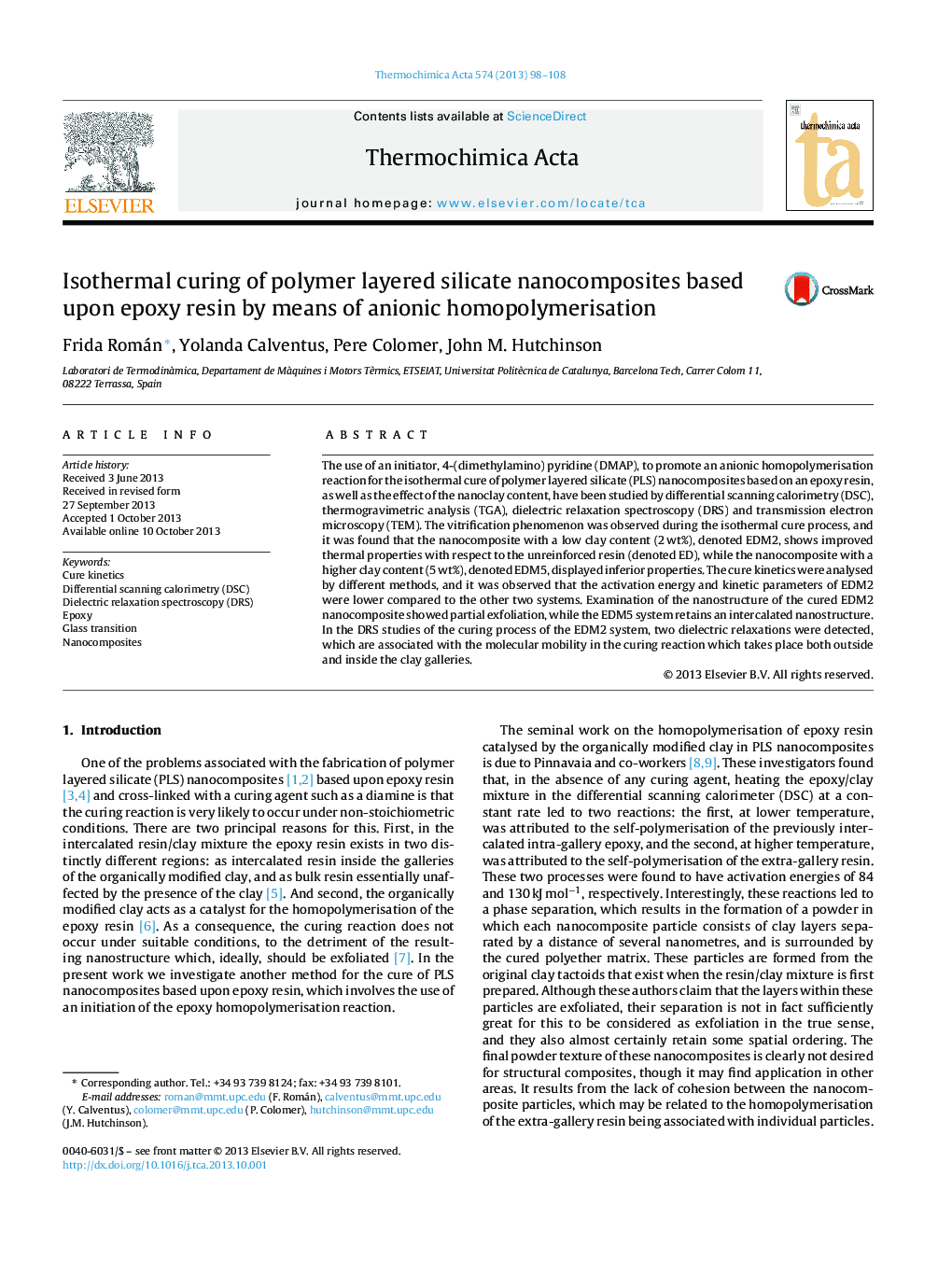| Article ID | Journal | Published Year | Pages | File Type |
|---|---|---|---|---|
| 673581 | Thermochimica Acta | 2013 | 11 Pages |
•The nanocomposite with low content of clay displayed improved thermal properties.•The vitrification was observed in the isothermal curing.•Dielectric relaxations outside and inside of the clay galleries were detected.
The use of an initiator, 4-(dimethylamino) pyridine (DMAP), to promote an anionic homopolymerisation reaction for the isothermal cure of polymer layered silicate (PLS) nanocomposites based on an epoxy resin, as well as the effect of the nanoclay content, have been studied by differential scanning calorimetry (DSC), thermogravimetric analysis (TGA), dielectric relaxation spectroscopy (DRS) and transmission electron microscopy (TEM). The vitrification phenomenon was observed during the isothermal cure process, and it was found that the nanocomposite with a low clay content (2 wt%), denoted EDM2, shows improved thermal properties with respect to the unreinforced resin (denoted ED), while the nanocomposite with a higher clay content (5 wt%), denoted EDM5, displayed inferior properties. The cure kinetics were analysed by different methods, and it was observed that the activation energy and kinetic parameters of EDM2 were lower compared to the other two systems. Examination of the nanostructure of the cured EDM2 nanocomposite showed partial exfoliation, while the EDM5 system retains an intercalated nanostructure. In the DRS studies of the curing process of the EDM2 system, two dielectric relaxations were detected, which are associated with the molecular mobility in the curing reaction which takes place both outside and inside the clay galleries.
